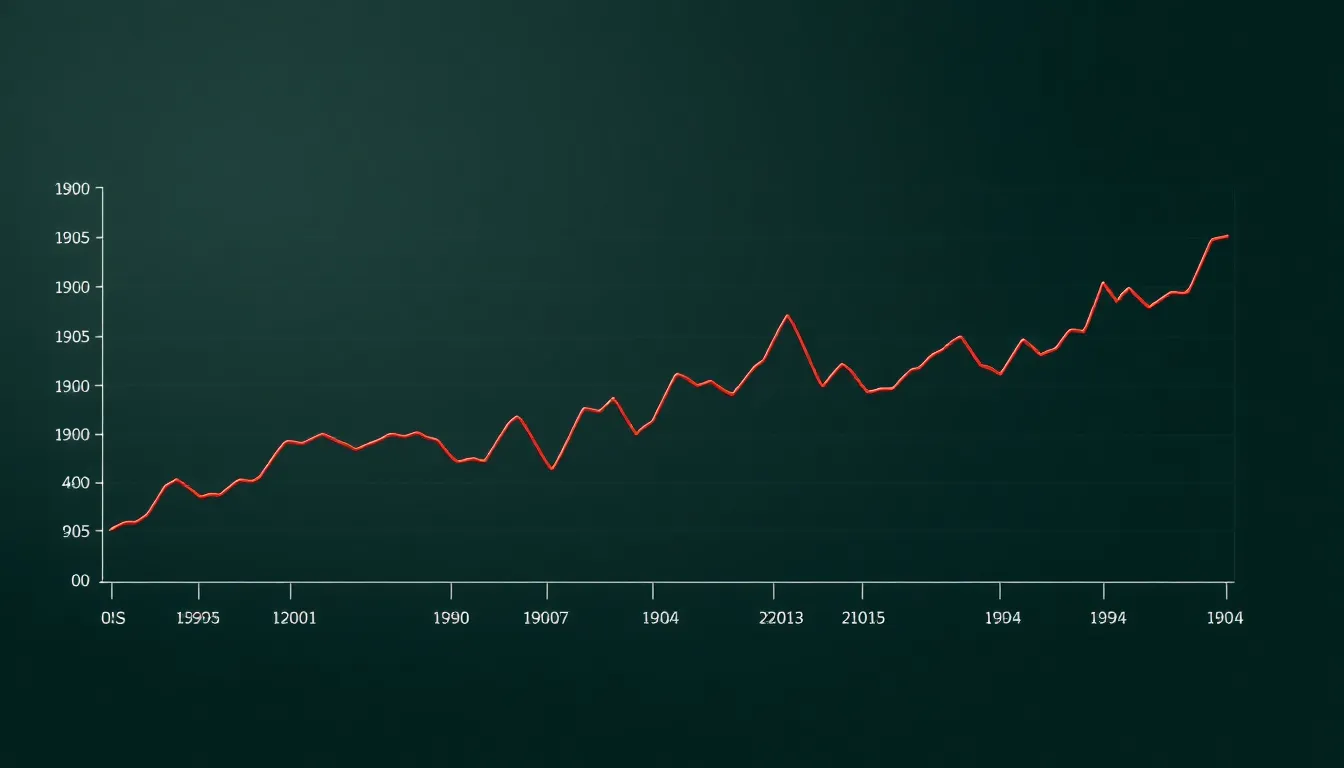Table of Contents
ToggleUnderstanding the exchange rate in Mexico is crucial for anyone involved in trade, travel, or investment. The value of the Mexican peso against other currencies can fluctuate based on various economic factors, impacting everything from import costs to tourism.
As Mexico’s economy continues to evolve, staying informed about these changes becomes essential. Whether it’s the influence of global markets or local economic policies, the exchange rate serves as a barometer for economic health. This article delves into the current landscape of the Mexican exchange rate, exploring its implications for businesses and consumers alike.
Overview of Tipo De Cambio En México
The exchange rate, known as “tipo de cambio,” represents the value of the Mexican peso against other currencies, particularly the US dollar. Understanding this rate is vital for those involved in trade, travel, or investment.
Fluctuations in the exchange rate occur frequently, influenced by various economic factors such as inflation rates, interest rates, and political stability. For example, a stable government often leads to a stronger peso, while economic uncertainty can result in depreciation. Traders must monitor these changes to maintain profitability.
Current Estado of the Exchange Rate
As of October 2023, the current exchange rate of the Mexican peso against the US dollar is approximately 18.50 pesos per dollar. This value fluctuates daily, affecting import costs and tourism expenditures. Businesses that import goods must account for these variations since a stronger peso lowers import costs, while a weaker peso raises them.
Implications for Businesses and Consumers
Businesses preparing for international transactions benefit from understanding the exchange rate. When the peso strengthens, companies can source materials at lower costs, increasing profit margins. Consumers also experience direct effects. Fluctuating rates can influence prices on imported goods, travel expenses, and overall purchasing power.
Factors Influencing the Exchange Rate
Several key factors influence the tipo de cambio in Mexico:
- Interest Rates: Higher interest rates attract foreign investment, strengthening the peso.
- Inflation: Low inflation rates contribute to currency stability, while high rates can lead to depreciation.
- Economic Data: Reports on GDP, employment rates, and trade balances provide insight into economic health and currency value.
- Political Events: Changes in government or policies can create uncertainty, impacting investor confidence and the peso’s value.
Keeping abreast of these factors enables businesses and consumers to make informed decisions regarding financial transactions in Mexico.
Historical Trends

The historical trends of the Mexican peso’s exchange rate reveal significant fluctuations influenced by various economic factors. Analyzing these trends provides insight into the currency’s performance and stability over time.
Major Changes Over The Years
- 1980s Crisis: In the 1980s, the peso experienced severe devaluation due to the economic crisis, leading to rates exceeding 3,000 pesos per US dollar by the decade’s end.
- 1994 Tequila Effect: The devaluation in 1994 resulted in the peso dropping approximately 40% against the dollar, prompting economic reforms and stabilization measures.
- 2008 Financial Crisis: The financial crisis led to the peso fluctuating between 10 and 14 pesos per US dollar, impacting trade and investments.
- Recent Stability: Since 2016, the peso has shown signs of stabilization, averaging around 18.50 pesos per US dollar as of October 2023.
Influencing Factors
- Inflation Rates: High inflation in Mexico can lead to peso depreciation as the purchasing power diminishes, compelling adjustments in the exchange rate.
- Interest Rates: The Bank of Mexico’s interest rate policies directly correlate with the peso’s strength, as higher rates typically attract foreign investment.
- Political Stability: Political events, such as elections and reforms, significantly impact market confidence and affect exchange rates.
- Global Economic Trends: Changes in the global economy, including US economic conditions, influence the peso’s value, given Mexico’s close trade ties with the United States.
Current Exchange Rate Situation
The current exchange rate situation in Mexico is dynamic, influenced by various economic factors. Continuous monitoring of the exchange rate is essential for businesses and consumers alike.
Key Players in The Market
Key players in the exchange rate market include central banks, commercial banks, financial institutions, and retail forex brokers. The Bank of Mexico plays a crucial role by implementing monetary policy that affects inflation and interest rates. Commercial banks facilitate currency trading for individuals and businesses, impacting the buying and selling of pesos. Financial institutions analyze economic indicators to make informed predictions regarding currency movements. Retail forex brokers enable access to foreign exchange for individual traders, thus increasing market liquidity.
Tools for Monitoring Rates
Several tools exist for monitoring exchange rates effectively. Financial news platforms provide real-time updates on currency fluctuations, ensuring users stay informed about market changes. Currency converter apps offer instant calculations for various currencies, aiding in quick decision-making. Economic calendars track relevant economic events that may impact exchange rates, such as interest rate announcements and inflation reports. Additionally, analytical software provides insights into trends and historical data, helping businesses anticipate future movements in the exchange rate. Regularly utilizing these tools helps adapt strategies in response to market conditions.
Economic Impact
Understanding the economic impact of the exchange rate in Mexico is crucial for businesses and consumers. Fluctuations in the “tipo de cambio” influence trade dynamics, inflation rates, and overall economic stability.
Effects on Trade
Exchange rate fluctuations directly affect the cost of imports and exports. A stronger peso lowers the cost of imported goods, making them more accessible to consumers and businesses. Conversely, a weaker peso increases these costs, potentially leading to higher prices for imported products. Exporters benefit from a depreciated peso, as their goods become cheaper for foreign buyers, enhancing competitiveness in international markets. Continuous monitoring of exchange rates enables companies to make informed decisions regarding pricing and sourcing.
Influence on Inflation
Changes in the exchange rate impact inflation rates significantly. When the peso weakens, imported goods become more expensive, which can drive up consumer prices and contribute to overall inflation. Higher inflation erodes purchasing power and can lead to increased costs of living. On the other hand, a stable or appreciating peso helps in controlling inflation, as imported goods remain more affordable, stabilizing prices across the economy. Economic policies focusing on exchange rate stability play a vital role in maintaining inflation at manageable levels in Mexico.
Future Predictions
Future predictions regarding the exchange rate of the Mexican peso depend on various economic indicators and potential scenarios that could influence its trajectory.
Economic Indicators to Watch
Monitoring specific economic indicators provides important insights into the future of the peso. Key indicators include:
- Inflation Rates: High inflation can lead to a lower peso value as purchasing power decreases.
- Interest Rates: Rising interest rates attract foreign investment, strengthening the peso.
- Economic Growth: Positive GDP growth signals economic stability, boosting investor confidence and potentially increasing the peso’s value.
- Trade Balance: A surplus in trade can lead to a stronger peso, while a deficit typically depreciates it.
- Political Stability: A stable political landscape reinforces investor confidence, supporting a stronger peso.
Keeping an eye on these indicators helps stakeholders anticipate shifts in the exchange rate.
Potential Scenarios
Various scenarios could unfold affecting the peso’s exchange rate. Possible scenarios include:
- Continued Stabilization: If inflation remains in check and economic growth sustains, the peso may stabilize around current levels, approximately 18.50 pesos per dollar.
- Devaluation Risk: Political instability or a significant economic downturn could lead to a depreciated peso, impacting imports and consumer prices.
- Appreciation: Strong economic reforms or favorable trade agreements might strengthen the peso, benefiting exporters and travelers.
- Global Economic Changes: External shocks, such as global economic downturns or changes in U.S. monetary policy, could have immediate effects on the peso.
Each scenario requires continuous analysis to prepare for potential economic shifts in Mexico.
Understanding the tipo de cambio in Mexico is essential for anyone involved in trade travel or investment. The ongoing fluctuations highlight the importance of staying informed about economic indicators and political events that influence the peso’s value. As businesses and consumers navigate this dynamic landscape they must adapt their strategies accordingly to mitigate risks and seize opportunities.
With current exchange rates around 18.50 pesos per US dollar it’s crucial to monitor changes closely. The implications of these fluctuations can significantly impact costs and purchasing power. By keeping an eye on the factors that drive the exchange rate individuals and businesses can make more informed financial decisions in Mexico’s ever-evolving economic environment.






